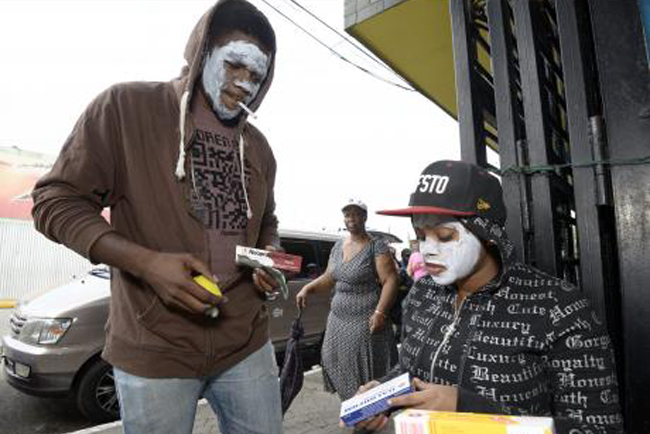(Jamaica Gleaner) The 2018 Jamaica Health and Lifestyle Survey has found that more men than women across the island are rubbing on the bleaching cream, and male development specialist Marlon Moore is not surprised.
“Women love brown men,” said Moore before adding, “I hear this talk mostly in the garrison.”
According to Moore, “If the women were rejecting this notion of bleaching and licking out on it, a lot of men would not have done it,” said Moore.
Preliminary findings from the survey show that approximately 11 per cent of Jamaicans have bleached their skin. The incidence of bleaching was higher among men, as 12.5 per cent bleached compared to 8.8 per cent women.
The survey, which was released last month, showed that lifetime prevalence of bleaching was highest in the 15-34 age group despite repeated warnings that persons who bleach are placing their health at risk.
Lecturer in the Department of Physics at the University of the West Indies (UWI), Phylicia Ricketts, has warned that several of the bleaching creams being used by Jamaicans have very high mercury content.
Ricketts is a member of the Medical Physics Research Group at UWI, which is conducting research on some of the popular skin-bleaching products being used locally.
“Mercury affects brain development,” she said before pointing out that, “Persons who experience mercury poisoning, they would usually display symptoms like irritability [and] forgetfulness.”
Ricketts said the study, which was started last November, is ongoing; however, they have found that some of the bleaching creams being used contain as much as 15,000 parts per million (ppm) of mercury.
“That is very, very high. We have a unique case here where we have products on the island with that very high level of mercury concentration,” said Ricketts.
The World Health Organization and the Food and Drug Administration have advised that cosmetics, including skin-lightening products, should not contain more that 1 ppm of mercury.
ABSORBING MERCURY
Ricketts said those who use the skin-whitening products are absorbing the mercury through their skin.
The research which is being conducted by the team at UWI is being funded by a grant from the Pan American Health Organization.
“Presently, Jamaica is a signatory to the Minamata Convention and that requires the country to do an assessment of sources of mercury in the island, so we looked at mercury from fish, mercury from light bulbs and thermometers, and also mercury from cosmetics,” Ricketts explained.
Jamaica signed the Minamata Convention in 2013 and ratified it in 2017. The convention is an international treaty aimed at reducing mercury pollution.
Signatories of the convention are required to control the manufacturing, importation and exportation of products containing mercury with the intention of completely prohibiting these products by 2020.
The police Counter-Terrorism and Organised Crime Branch (CTOC) seized 78,000 containers of assorted bleaching creams during an operation last year April.
Assistant Superintendent of Police Victor Barrett, who is assigned to CTOC, noted that there has been no seizure of bleaching products since the start of this year.
“It could be a possibility that they are either masking the product or they are discontinuing, or they find creative ways to bring them in,” said Barrett.
All the bleaching products used in Jamaica are imported, with some given clearance by the Ministry of Health for other uses.

